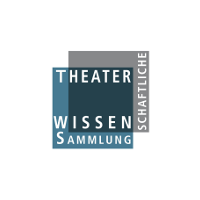“Volo del Turco” (The Flight of the Turk), 1816, after the original of c. 1548. Museo Civico Correr, Venice, Gabinetto dei disegni e delle stampe, inv. St. PD 8114. 2016 © Photo Archive - Fondazione Musei Civici di Venezia
Festive Entanglements: Carnival and the Performances of Minority Groups in Early Modern Europe
In this keynote address I explore the cultural entanglements that carnival and other festive performances prompted in early modern Europe. Commedia dell’arte, which frequently depicted distinctive identities and cultures through performances, is a prime exemplar. Armenians, Jews, and Turks were recurring characters in these performances, reflecting a preoccupation with myriad Mediterranean identities in enactments that spanned denigration to valorization. These enactments incorporated various languages and dialects, some real, and some imagined as they aimed to capture and represent migratory passages. While performances such as these amplified difference through stereotype, they also embraced shared experiences in surprising ways. The commedia dell’arte actors, whose very nature was migratory, found counterparts in various nomadic performers from minority groups who were working in Europe at the same time. Among these minority groups, Ottomans and Jews drew from their own cultural and religious traditions and tested the boundaries of inclusion and occlusion by their European patrons and audiences. Hidden networks of exchange among the Jewish and Ottoman performers and commedia dell’arte actors made it possible for the minority groups to negotiate the terms of their own performative work. Carnival provides a rich example of a transcultural threshold during which Ottoman Turks performed alongside Christian Performers. Similarly, Jewish performers were incorporated in localized festive celebrations, projecting, for their patrons, an image of a strategic inclusivity that traversed religious and regional borders. To what extent did these performances serve to cement cultural connection? Demarcate the limits of tolerance? To what degree were they strategic, projecting hierarchy and power? These are crucial questions to be raised and explored during the keynote address in which we consider how this panoply presents a multi-dimensional “culturescape” of festive entanglements.
Biography
Erith Jaffe-Berg is a Professor of Theatre at the Department of Theatre, Film and Digital Production at the University of California at Riverside. Her research focuses on the commedia dell’arte and performances by minority groups in early modern Italy. She is the author of three books: Jewish Theatre Making in Mantua, 1520-1650 (2022), Commedia dell’Arteand the Mediterranean: Charting Journeys and Mapping “Others” (2015), and The Multilingual Theatre of Commedia dell’Arte (2008). She has published essays on early modern performance in various journals, including: I Tatti Studies, Theatre Survey, Early Theatre, and The Journal of Dramatic Theatre and Criticism, among others. She has contributed to various anthologies, most recently: The Palgrave Handbook on Theatre and Migration (2024), the Routledge Encyclopedia of the Renaissance World (2023), and the Routledge Companion to Theatre History and Historiography(2021). She is currently at work as part of an ongoing international research collaboration tracing the appearance of dragons in theatre. She is a member of Los Angeles-based Theatre group Theatre Dybbuk (www.theatredybbuk.org). She is a recipient of the UC Riverside Distinguished Teaching Award (2020), a recipient of a UC Humanities Research Institute fellowship, and a Gladys Krieble Delmas Foundation grant, among others.
